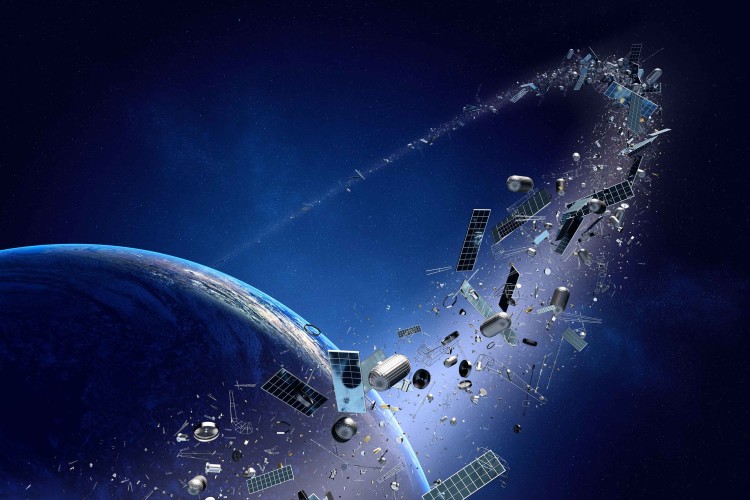
Werner’s blog: Space debris is becoming a safety and economic hazard

On December 19, 2022, UBC’s Outer Space Institute (OSI), a network of world-leading space experts (physical scientists, social scientists, lawyers, engineers, industry leaders, and policy makers), penned an open letter to leaders of the world’s space agencies, entitled “Reducing risks from uncontrolled reentries of rocket bodies and other space objects.” UBC Sauder Associate Professor Werner Antweiler was one of the distinguished signatories on the letter. In an excerpt from his latest blog post, Professor Antweiler discusses his specific concerns and motivations behind joining this cause.
The uncontrolled reentry of space debris and rocket launchers is posing a new, and potentially costly, hazard to all of us. Last year, roughly two-thirds of rocket launches to Low Earth Orbit (LEO) resulted in uncontrolled re-entries, and a significant share of their mass survives reentry into the atmosphere. Even small fragments that make it to the ground can be large enough to cause serious damage. With rocket launches becoming cheaper and more frequent, we can expect the problem to grow significantly over the next decade.
What are the risks?
In July 2022, rocket debris from a Chinese Long March 5B heavy-lift rocket reentered the atmosphere over the Indian Ocean, but China's space authority failed to share trajectory information with its international partners. On a previous test flight in 2020, things turned out much worse: a Long March 5B booster fell on villages in the Ivory Coast in western Africa, causing some property damage but, thankfully, no injuries. In November 2022, Spain had to close part of its airspace because another chunk of a Long March 5B was threatening flight routes. The European Union's Aviation Safety Agency (EASA) recommends flight restrictions on a 200 km-wide path around each of the reentry passes of these pieces of space debris. In busy air spaces around the world, reentrant boosters and other heavy space debris are causing costly flight delays. Lack of information provided by some space agencies is also causing direct threats to life.
Estimates of risk need to explicitly consider low-probability, high-impact events such as debris strikes on aircraft in flight. There are risk multipliers that change the calculation of potential harm, which conventional estimates do not take into consideration. The economic cost of reentrant space debris is much higher if we also count disruptions to economic activity such as civil aviation. Because of these indirect effects, what we see is a classic negative externality problem similar to environmental pollution. So, what can be done to massively reduce the negative externalities from rocket launches?
What needs to be done?
The world urgently needs negotiations on a controlled reentry agreement. Rockets need to be equipped with the ability to control their reentry, leaving sufficient fuel for reentry burns that can control the reentry trajectory. While some first-stage boosters can now be recovered safely, as is the case with Space-X's reusable Falcon-9 boosters, second-stage boosters that make it into orbit will reenter the atmosphere typically days after launch, and thus need orbital manoeuvres to control when and where they reenter the atmosphere. Obviously, this will add cost to the launches due to extra weight for the required fuel. But shirking this cost creates other costs down on Earth, first for civil aviation, and ultimately also in the form of damage, injuries, or even deaths. Such accidents are completely preventable. It will take space-faring nations to come to an agreement. The open letter concludes:
Simply hoping that uncontrolled reentries will not cause harm is an unsustainable strategy. With leadership, cooperation and global goodwill, these preventable and therefore unnecessary dangers can be greatly reduced.
What are the practical solutions?
- Avoid populated areas, or areas with high aviation or maritime traffic. Some locations are certainly better than others: the best-known location is Point Nemo, the point farthest from land in the South Pacific Ocean, which is also known as "the oceanic pole of inaccessibility."
- Design launch vehicles (mostly the second stages) in such a way that increases the likelihood of their full burn-up upon reentry.
- Make liability explicit so that there is an economic incentive to invest in the first two solutions.